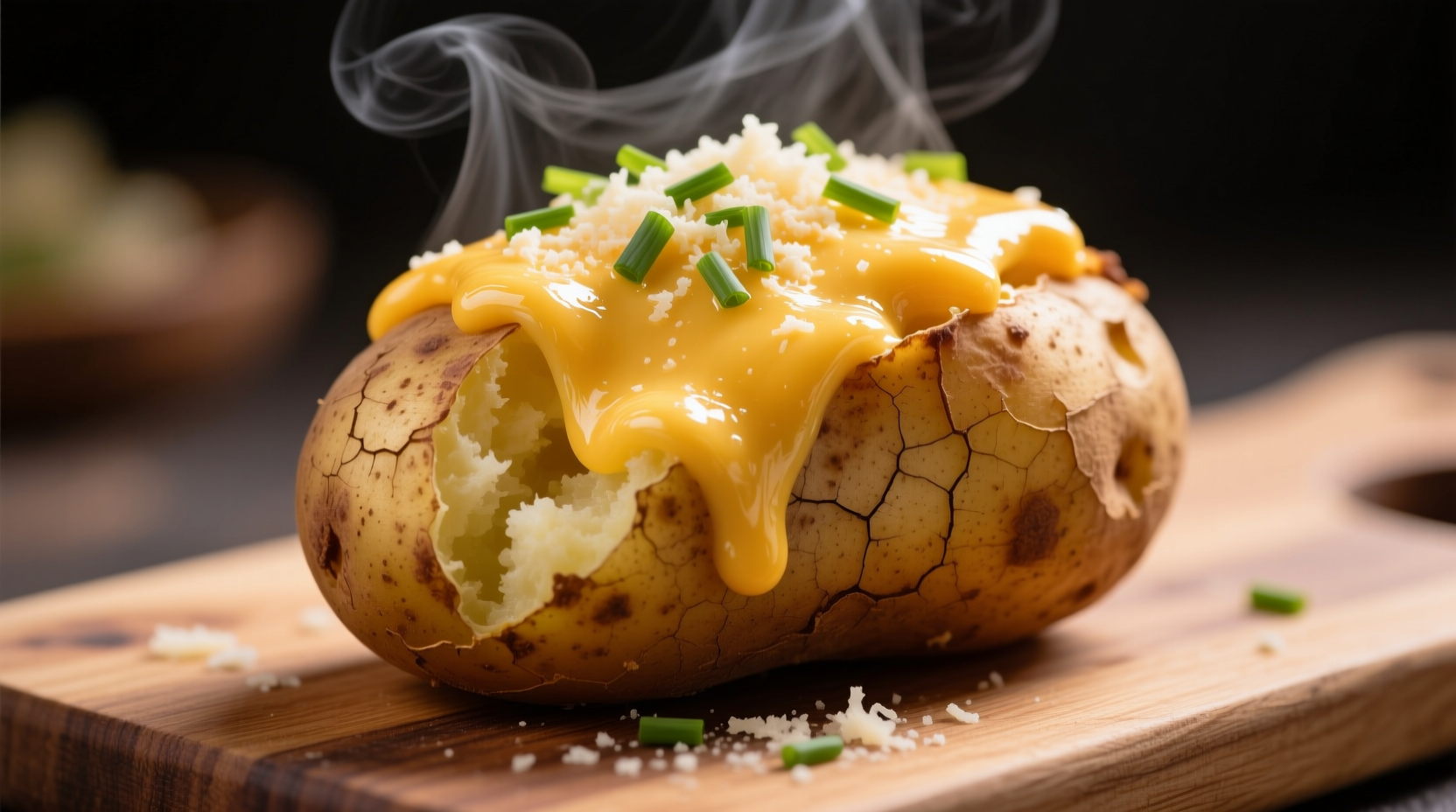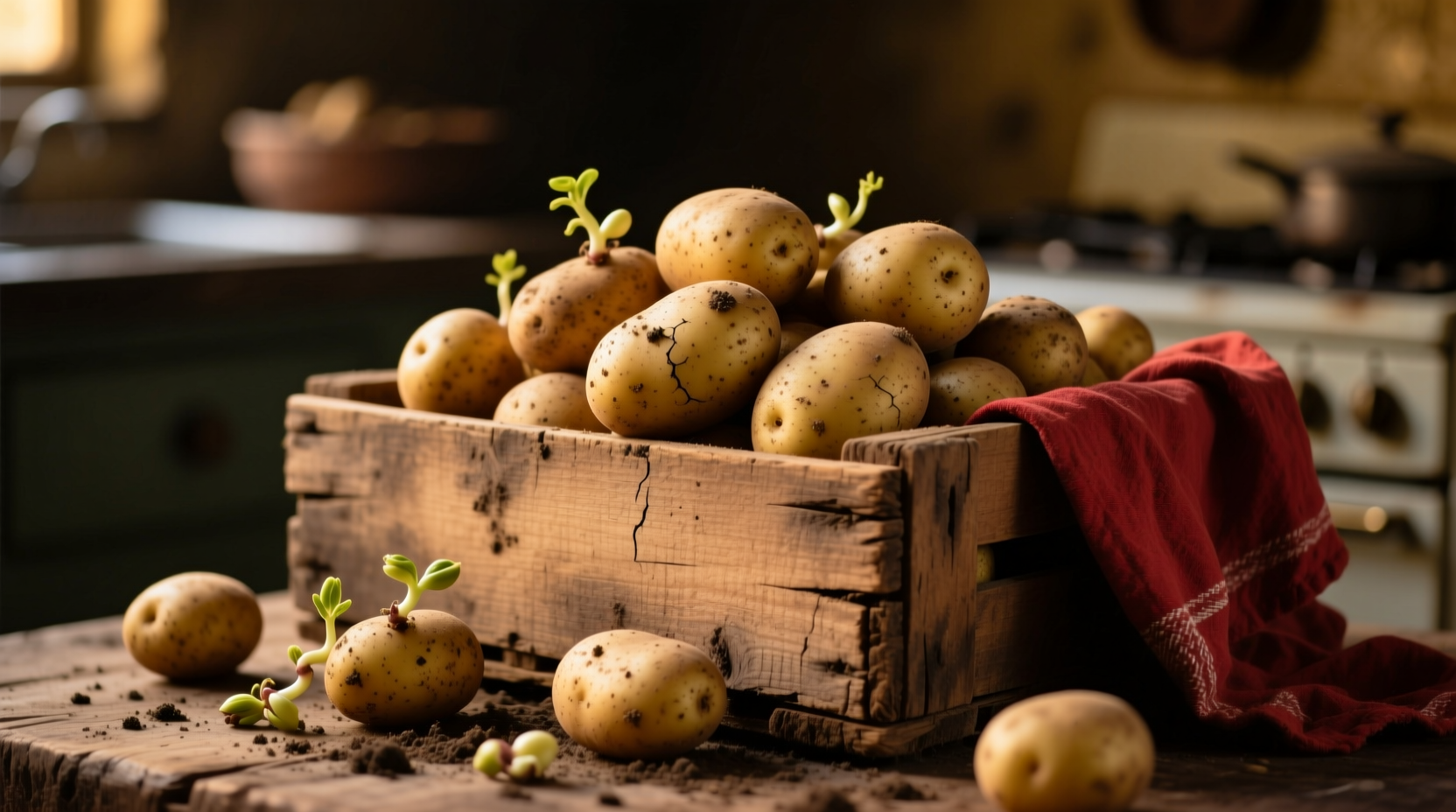Creating perfect stuffed potatoes transforms a humble spud into a satisfying meal centerpiece. This guide reveals professional techniques for selecting the best potatoes, achieving optimal texture, and crafting fillings that elevate rather than mask the potato's natural flavor profile. Whether you're preparing a weeknight dinner or entertaining guests, these evidence-based methods ensure consistently delicious results.
Why Potato Selection Matters
The foundation of exceptional stuffed potatoes begins with choosing the right variety. Not all potatoes behave the same when baked and stuffed. Russet potatoes remain the gold standard for stuffing due to their thick skins that crisp beautifully and high starch content that creates that signature fluffy interior.
| Potato Variety | Best For Stuffing? | Texture When Baked | Flavor Profile |
|---|---|---|---|
| Russet/Idaho | Excellent | Fluffy, dry | Earthy, mild |
| Sweet Potato | Good (different style) | Creamy, moist | Sweet, complex |
| Yukon Gold | Fair | Buttery, dense | Rich, buttery |
| Red Potato | Poor | Firm, waxy | Mild, slightly sweet |
According to the Australian Department of Agriculture, russet potatoes contain approximately 20-22% starch content compared to 16-18% in Yukon Golds and 14-16% in red potatoes. This higher starch content creates the ideal fluffy texture that readily absorbs flavors while maintaining structure when stuffed.
Professional Baking Technique
Many home cooks make the critical mistake of microwaving potatoes for stuffed preparations. While faster, this method produces uneven texture and fails to develop the crispy skin essential for structural integrity. Professional chefs universally recommend oven-baking for stuffed potatoes.
Follow this proven method:
- Preheat oven to 400°F (204°C)
- Scrub potatoes thoroughly and dry completely
- Pierce skin 6-8 times with a fork
- Coat skins lightly with vegetable oil and sprinkle with salt
- Place directly on oven rack with baking sheet below to catch drips
- Bake 45-60 minutes (depending on size) until internal temperature reaches 205-210°F (96-99°C)
- Let rest 5 minutes before handling

Mastering the Scooping Process
The technique for removing potato flesh significantly impacts your final presentation and texture. Cut potatoes in half lengthwise, then use a small spoon to carefully scoop out the flesh, leaving a 1/4-inch thick shell. The University of Maine Cooperative Extension confirms that maintaining this shell thickness prevents collapse during filling and baking.
Resist the temptation to over-scoop - the remaining shell provides structural support and contributes to the overall eating experience. If you accidentally pierce the bottom, place that half face-down on your baking sheet to prevent filling leakage.
Evolution of Stuffed Potato Preparations
Stuffed potatoes have evolved significantly from their humble beginnings. Understanding this timeline helps contextualize modern preparation techniques:
- 1800s: Irish and Eastern European immigrants created early versions using leftover mashed potatoes stuffed back into skins
- 1930s: American cookbooks began featuring "potato boats" with simple cheese or bacon fillings
- 1970s: The term "stuffed potato" gained popularity with the rise of steakhouse culture
- 1990s: Gourmet variations emerged with ingredients like sour cream, chives, and jalapeños
- 2010s-Present: Global fusion stuffings incorporating international flavors and dietary adaptations
Filling Formulation Principles
Creating balanced fillings requires understanding flavor and texture interactions. Professional chefs follow these evidence-based guidelines:
- Creaminess ratio: Maintain 60% potato to 40% added ingredients for optimal texture
- Moisture control: Cook wet ingredients (like vegetables) separately to prevent soggy filling
- Temperature management: Mix fillings while potato is still warm for best ingredient incorporation
- Seasoning layering: Season components individually before combining
Food science research from the Culinary Institute of America demonstrates that adding cold ingredients to warm potato flesh causes uneven texture and separation. Always bring dairy and other fillings to room temperature before mixing.
Top 5 Stuffed Potato Variations
These professionally developed variations showcase different flavor profiles while maintaining structural integrity:
Classic Loaded Baked Potato
Combine potato flesh with 1/4 cup sour cream, 1/2 cup shredded cheddar, 2 tablespoons crumbled bacon, and 1 tablespoon chives. Fill shells, top with additional cheese, and bake at 375°F (190°C) for 15 minutes until cheese melts.
Mediterranean Herb Potato
Mix potato with 2 tablespoons olive oil, 1 minced garlic clove, 1/4 cup crumbled feta, 2 tablespoons chopped sun-dried tomatoes, and 1 tablespoon each of chopped basil and oregano. Top with pine nuts before final bake.
Buffalo Chicken Stuffed Potato
Fold 1/2 cup shredded cooked chicken breast with 3 tablespoons buffalo sauce and 2 tablespoons blue cheese dressing into potato flesh. Fill shells, top with additional shredded chicken and blue cheese crumbles, then bake until heated through.
Breakfast Stuffed Potato
Combine potato with 1/4 cup cooked breakfast sausage, 2 chopped hard-boiled eggs, 2 tablespoons shredded cheddar, and 1 tablespoon chopped parsley. Top with additional cheese and bake until golden.
Truffle Mushroom Stuffed Potato
Sauté 1/2 cup diced mushrooms with 1 minced shallot until golden. Fold into potato with 1 tablespoon truffle oil, 2 tablespoons grated parmesan, and 1 teaspoon fresh thyme. Top with additional parmesan before final bake.
Critical Context Boundaries
Understanding when certain techniques work (and when they don't) prevents common failures:
- Moisture-rich fillings (like salsa or tomato-based ingredients) require pre-cooking to remove excess liquid
- Cheese selections matter - high-moisture cheeses like fresh mozzarella create soggy fillings
- Gluten-containing fillings (like bread crumbs) work best as toppings rather than mixed into the filling
- Dairy substitutions for vegan versions require careful moisture adjustment to maintain texture
Storage and Reheating Guidelines
Proper storage maintains texture and food safety. The USDA Food Safety and Inspection Service recommends:
- Refrigerate leftovers within 2 hours of cooking
- Store in airtight containers for up to 3-4 days
- Reheat in oven at 350°F (177°C) for best texture retention
- Microwave reheating requires covering with damp paper towel to prevent drying
- Freeze unbaked stuffed potatoes for up to 3 months
Never leave stuffed potatoes at room temperature for more than 2 hours, as the combination of starch and dairy creates ideal conditions for bacterial growth.
Common Mistakes to Avoid
Professional chefs consistently identify these errors that compromise stuffed potato quality:
- Using inappropriate potato varieties (waxy potatoes collapse when stuffed)
- Overfilling the potato shell, causing structural failure
- Adding cold ingredients to warm potato flesh
- Skipping the final bake after filling (essential for flavor integration)
- Using excessive liquid ingredients without reduction
Expert Tips for Restaurant-Quality Results
Implement these professional techniques at home:
- Brush potato shells with egg wash before final bake for extra-crisp texture
- Add a teaspoon of potato starch to fillings for improved structural integrity
- Use a piping bag for elegant, consistent filling presentation
- Finish with a sprinkle of flaky sea salt immediately after baking
- Let filled potatoes rest 5 minutes before serving for optimal texture











 浙公网安备
33010002000092号
浙公网安备
33010002000092号 浙B2-20120091-4
浙B2-20120091-4